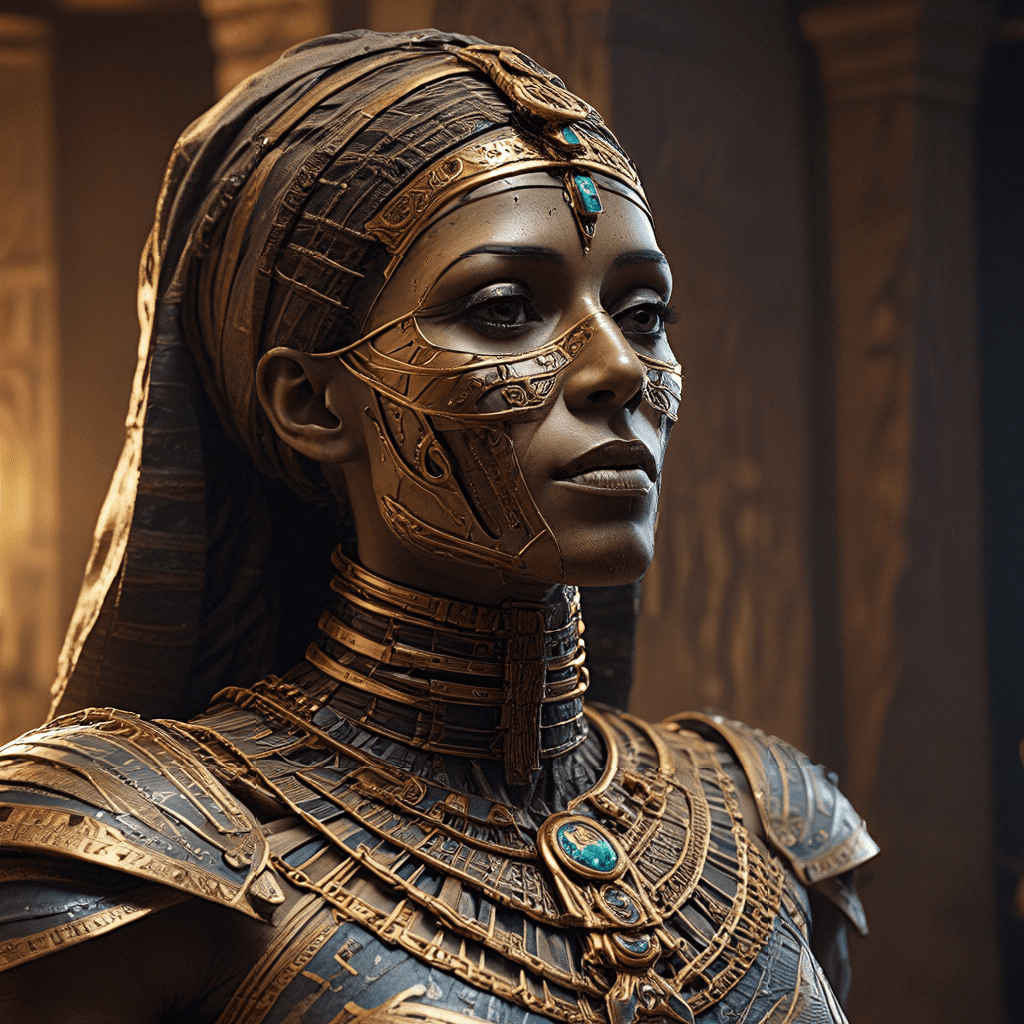1. The Importance of the Afterlife in Ancient Egyptian Belief
Ancient Egyptians had a strong belief in the afterlife. They believed that when someone died, their soul, or “ka,” would travel to the underworld and face judgment. The afterlife was not a place of punishment, but a realm where the deceased could continue to live, but in a different form. This journey to the afterlife was complex and involved numerous steps, and Egyptians believed that the physical body was essential to this journey. If the body was not preserved, the “ka” would not be able to find its way back to the body and would be lost forever.
2. The Role of the Ka and Ba in the Afterlife
The ancient Egyptians believed that each person had two souls: the “ka” and the “ba.” The “ka” was a life force that existed in the afterlife, while the “ba” was a personality that represented the deceased’s spirit. The “ba” could travel back and forth between the underworld and the world of the living. The “ka” would remain with the body, and it was essential that the body be preserved so that the “ka” could find its way back.
3. The Sacred Nature of the Body and the Necessity for Preservation
The ancient Egyptians believed that the body was sacred and needed to be preserved for the afterlife. They believed that the physical body was essential for the “ka” to return and for the deceased to live in the afterlife. The process of mummification was therefore a sacred ritual and a way to honor the deceased and ensure their safe passage into the afterlife.
4. The Preparation of the Body: Cleansing and Removal of Organs
The first step in the mummification process was to cleanse the body. The body was washed with water and then covered with natron, a type of salt that helped to remove moisture and prevent decay. The next step was to remove internal organs, such as the stomach, intestines, lungs, and liver. This was done through a small incision in the left side of the body. These organs were then preserved separately and placed in special containers called canopic jars. Each jar was designed to hold a different organ and was topped with a human-headed lid representing the god who guarded that organ. This process of removing the organs helped to preserve the body and prevent it from decaying.
5. The Process of Drying and Salting: Removing Moisture and Decay
Once the organs were removed, the body was dried and salted with natron. The body was placed on a specially designed table with a slope to drain the liquids away. It took around 40 days for the body to completely dry. Over time, the process of removing moisture and decay was perfected, but Egyptians used several techniques throughout history to dry the bodies, including stuffing the body with natron. This process took many weeks and involved regularly replacing the natron to ensure that the body was completely dried.
6. The Application of Resins and Oils: Preserving the Flesh
After the body was dried, it was washed again and covered with a mixture of resins and oils. These substances helped to preserve the body and prevent it from further decay. They also gave the body a smooth, waxy appearance. Resins were used to prevent the flesh from drying out too much and were applied to the body in stages. Oils were used to seal the pores of the skin, which helped to further preserve the body.
7. The Wrapping of the Body: Creating a Protective Layer
Once the body was preserved, it was wrapped in linen strips soaked in resins and oils. These strips were wrapped tightly around the body, creating a protective layer. The body was typically wrapped in a specific pattern to resemble a royal mummy. The process of wrapping the body was lengthy and complex. Each strip of linen was carefully applied to the body, and the process could take up to 70 days to complete. The wrapping process was considered to be sacred and was performed by skilled priests who used special tools and techniques.
8. The Use of Amulets and Protective Spells: Ensuring Safe Passage in the Afterlife
In addition to the wrapping, amulets and protective spells were placed on the body to ensure the deceased’s safe passage in the afterlife. These amulets were usually made of precious stones or metals and were believed to protect the deceased from evil spirits and help them to navigate the underworld. The spells were written on papyrus scrolls or linen bandages and were placed on the body or in the tomb. The spells were designed to guide the deceased through the underworld and to help them to reach the afterlife.
9. The Burial Ceremony: Honoring the Deceased and Their Journey
The burial ceremony was an important part of the mummification process. It was a time for the family and friends of the deceased to mourn and to honor their memory. The body was placed in a sarcophagus, which was a coffin made of wood, stone, or metal. The sarcophagus was then placed in the tomb, along with other possessions that the deceased would need in the afterlife. These items might include food, drink, jewelry, and weapons.
10. The Evolution of Mummification Techniques Over Time
Mummification techniques evolved over time, and there were several different methods used throughout Egyptian history. The most elaborate methods were reserved for the pharaohs and other members of the royal family. Throughout the centuries, mummification became a more complex process, involving more steps, as Egyptians gained a deeper understanding of the body and the process of decay. The methods used for mummification also varied depending on the region of Egypt. From the earliest times through the 3rd intermediate period, the process of mummification was an important part of ancient Egyptian culture and an expression of their belief in the afterlife.




